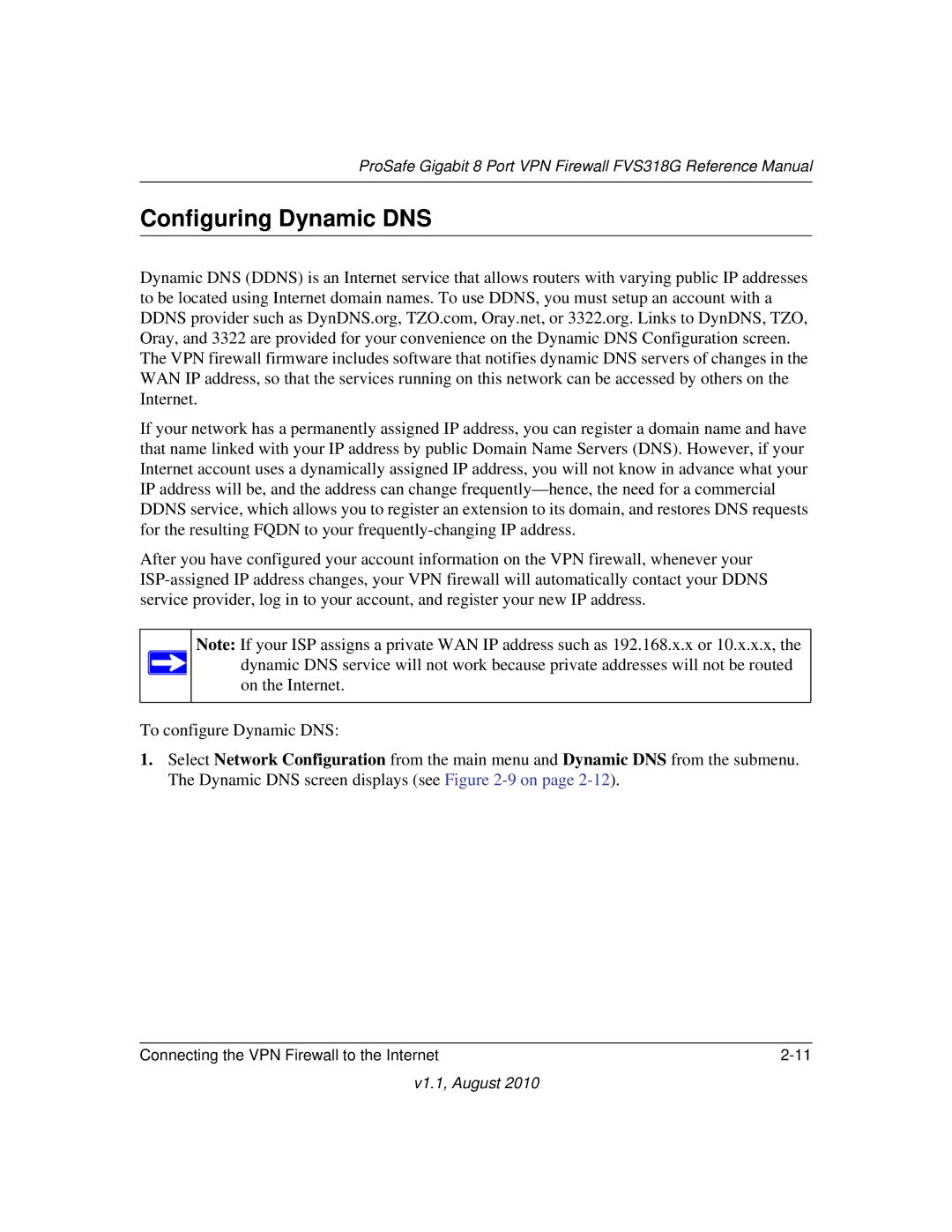
ProSafe Gigabit 8 Port VPN Firewall FVS318G Reference Manual
Configuring Dynamic DNS
Dynamic DNS (DDNS) is an Internet service that allows routers with varying public IP addresses to be located using Internet domain names. To use DDNS, you must setup an account with a DDNS provider such as DynDNS.org, TZO.com, Oray.net, or 3322.org. Links to DynDNS, TZO, Oray, and 3322 are provided for your convenience on the Dynamic DNS Configuration screen. The VPN firewall firmware includes software that notifies dynamic DNS servers of changes in the WAN IP address, so that the services running on this network can be accessed by others on the Internet.
If your network has a permanently assigned IP address, you can register a domain name and have that name linked with your IP address by public Domain Name Servers (DNS). However, if your Internet account uses a dynamically assigned IP address, you will not know in advance what your IP address will be, and the address can change
After you have configured your account information on the VPN firewall, whenever your
Note: If your ISP assigns a private WAN IP address such as 192.168.x.x or 10.x.x.x, the dynamic DNS service will not work because private addresses will not be routed on the Internet.
To configure Dynamic DNS:
1.Select Network Configuration from the main menu and Dynamic DNS from the submenu. The Dynamic DNS screen displays (see Figure
Connecting the VPN Firewall to the Internet |
